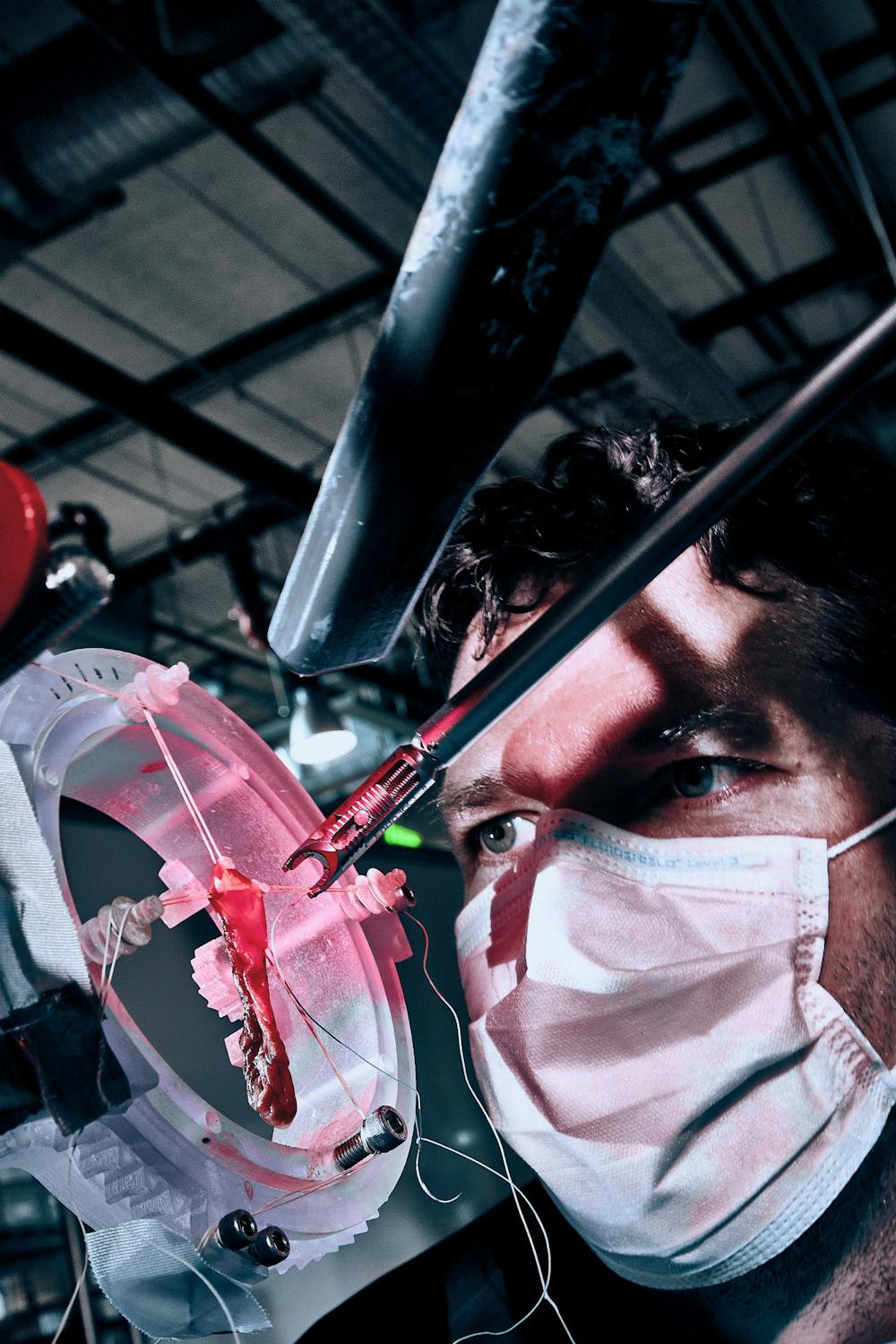In January 2022, the Smart Tissue Autonomous Robot (STAR) performed laparoscopic surgery on the soft tissue of a pig without any human help. Laparoscopic surgery involves small tubes inserted into the abdomen or pelvis to manipulate tissues.
The News-Letter had the opportunity to discuss the robotic system with Axel Krieger, an assistant professor and inventor from the Department of Mechanical Engineering, and Jin Kang, Jacob Suter Jamer professor and expert in optical imaging, sensing, fiber optics and photonic systems from the Department of Electrical and Computer Engineering.
Krieger’s interest in developing a robotic system that could perform laparoscopic surgery originated in 2011, when he was working in Children’s National Hospital in Washington, D.C. as a research professor. He initiated the idea with Dr. Michael Hsieh, a urologist at Children's National Hospital, and then collaborated with Kang to make suitable imaging systems.
Robotic surgical systems first appeared around 50 years ago, but they were not applied in the medical field until the late 1980s when Robodoc, an image-guided system, was used for prosthetic hip replacement. Since then more technological advancements have been made so robotic surgical systems can perform neurosurgeries, gynecological surgeries and urological surgeries.
STAR is the first robot to perform laparoscopic surgery without any human help. The main goal behind this robotic system is to perform autonomous anastomosis, the surgical connection of two adjacent blood vessels, which requires highly intricate imaging, tissue monitoring and surgical planning techniques within the intestinal tissues.
The current version of STAR is adapted from the 2016 model, which performed in open surgical settings with tissues restricted by outside fixtures. In contrast, the current model allows repetitional, intricate suturing to be performed in laparoscopic settings, a type of robotic system that allows access to the abdomen and pelvis without making large incisions. The biggest difference between this robotic system and the other existing robots is that it allows surgeries to be performed with minimal human intervention. When operating, STAR surgeons only have to select the intended surgical plans, and the robot will execute the remaining tasks independently.
Krieger further explained the difference between STAR and other existing robotic systems.
“The big difference [between STAR and other surgical robotic systems] is this paradigm shift [from teleoperated to autonomous system],” he said. “Operators used to need to sit on the console and direct every motion of the robot, which is almost an extension of human hands. Now with STAR, a robot can perform complex parts of the surgeries with just surgeons’ supervision.”
According to Krieger, one of the main challenges in creating STAR was finding a way to monitor tissue movement in the human body over time within a confined space. To combat this challenge, Krieger collaborated with Kang, whose research mainly focuses on developing optical techniques for biomedical applications to create a 3D imaging system that consists of near infrared cameras (NIR) and 3D cameras. The 3D imaging system allows the robot to reconstruct a 3D model of the tissue and to track tissue movement and kinetics when the patient is breathing and during intervals of different suturing steps.
In an interview with The News-Letter, Kang discussed the main functions and premises of the 3D imaging system. The team assumed that, like humans, the robot would need an intelligence system based on sight. 3-D imaging would allow the robots to assess visual values such as distance, which is important for making precise sutures.
Kang suggested that their current goal is to improve the speed of the 3D imaging system and to get more real-time measurements of tissue movement without sacrificing the accuracy.
During an interview with The News-Letter, Krieger commented that as the surgical field is moving toward robotic systems, this change would democratize patients’ access to surgeries with fewer discrepancies between each surgical outcome.
Krieger also noted that robotic systems are not meant to replace surgeons; they are tools that assist surgeons in performing more repetitional, consistent tasks with high precision.
“The surgeons [still] do a large portion of the surgery, but [we would use the robots] for the technical, difficult stitching that requires so many fine movements with consistency and repeatability,” he said.





